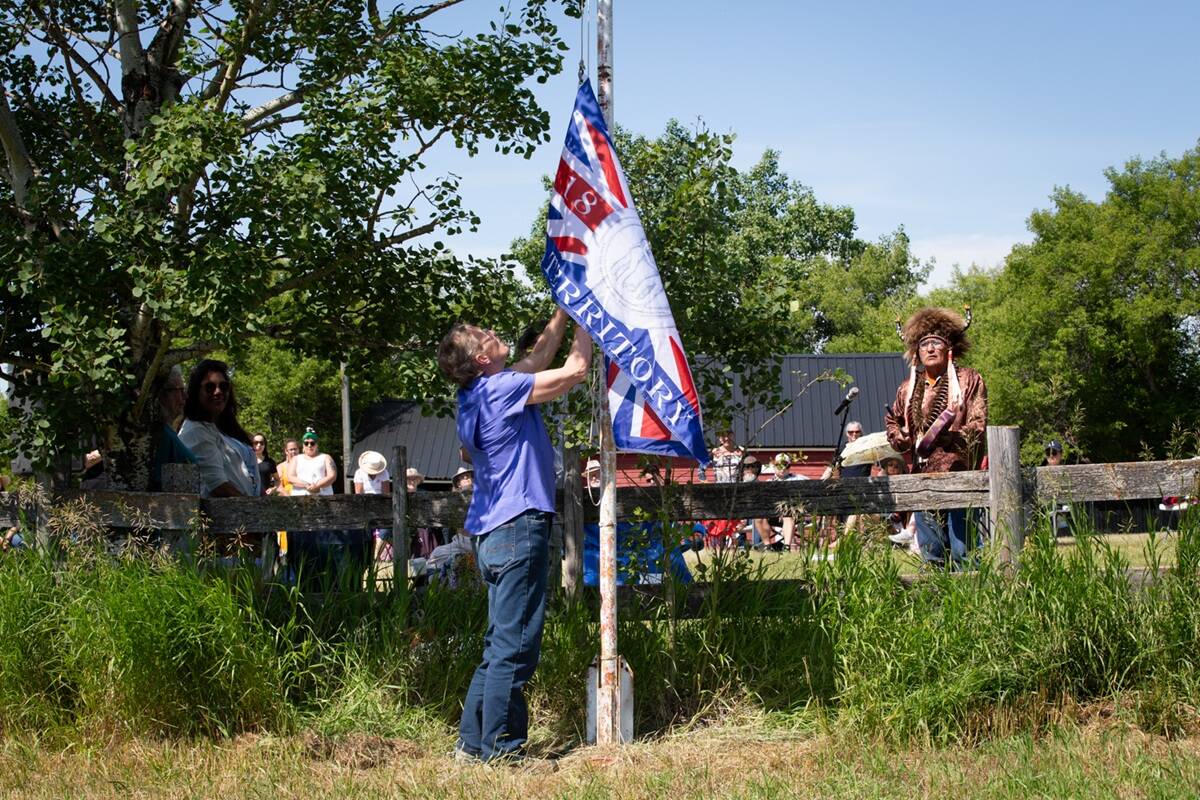In order to measure how good a job you or the processing crew are doing with implanting it really pays to periodically check your technique. A few extra seconds at the chute making sure implants are placed cleanly and properly returns benefits in increased gains. Much has been said about implant strategies but we don’t often review how we implant, regardless of which implant we use. Chances are, if we are doing something incorrectly we are doing it with all implants.
By auditing your procedures, or those of the people who process the calves brought into the feedlot, you derive valuable information that can help you in the future.
Read Also

Treaty Land Sharing Network expands reach in Saskatchewan and Alberta
The Treaty Land Sharing Network, which connects land holders with First Nations and Metis people, has expanded since it began in 2018
It may lead to positive communication up and down the production chain that benefits all aspects of your production. When implants are handled sloppily, vaccines may not be handled properly either. Because implants can be felt for a long time after they are placed in the ear they are a very objective measure of success in terms of technique. Scoring is very repeatable between different individuals and accepted levels of losses due to abscesses and crushing have been established. We all would like to do everything at 100 per cent, or at least close to that. An audit can help you reach that target.
All three companies that distribute implants in Canada offer aids to improve your technique, whether it be auditing, presentations, videos or sending reps out to demonstrate proper techniques to processing crews. All are aimed at maximizing the benefits you should get from your implanting program.
During the auditing process the implant is first palpated (ideally three weeks after implanting) to see that is in place with no abnormalities.
Abscesses are scored as slight, severe and walled off. Abscesses cause differing absorption rates depending on their severity. In severe cases the pellet may even be pushed out.
When an implant is missing we want to know if the animal was missed, indicating a chute side problem, or if the pellets fell out because of an abscess. When the needle penetrates through the ear, the pellets simply fall to the ground. Everyone can make this mistake but it is easily corrected by implanting the other ear. Crushed, bunched or improperly placed implants can also be detected. Crushing is the worst, bunching is a minor problem.
I was recently called to a feedlot client with the complaint that his steers were coming in with no implants even though they had gone through a processing centre. Initially I couldn’t find any implants either, but after clipping the ears I found the crew were implanting the Ralgro implant at the base of the ear, a practice that has not been recommended for 20 years now. With this discovery we were able to dispel the client’s concern that the crew was not implanting the cattle, and fix the problem by demonstrating the correct technique.
An audit provides a good opportunity to refresh every-one’s technique, including the correct location for an implant, and what to do with disinfectants, manure-stained ears, frozen ears and the big one now, “what do I do with all these tags taking up prime implanting space?”
In performing these audits it has become apparent that this is an issue that the industry needs to address. All these tags are cluttering up ear space that has become valuable territory today when most feedlot animals are being implanted two to four times during their lives. Then we have Excede, a new antibiotic that is given in the ear as well.
This raises a second reason why calves can ill afford frozen ears. Not only are they discounted at the market, it is often difficult to find enough ear room for an RFID tag so they can be shipped to the market, let alone space for an implant.
With retained ownership you reduce tag clutter and help yourself by leaving the most ideal place in the middle third of the right or left ear for a terminal implant. This is usually a TBA implant that has the largest needle size and returns you the biggest bang for your buck, so you need maximum absorption of the hormone.
It has almost reached the stage where you have to start managing ear space. Most operators have a preferred side that they implant on when possible but if an implant has been given there or the ear is unacceptable, they have to use the other ear.
RFID tags have the best retention high up and closer to the head, which puts them out of the implant zone. Dangle tags can be put lower down for greater visibility, away from the implanting area, and they can be pegged through existing holes from previous tags.
If necessary you can expand the implanting site towards the top fold where the back of the ear becomes the front. This is the preferred second site for implants but it also increases the odds of bleeding.
Once you find the correct location in the ear, make sure you place the needle deep enough that the pellets remain in place when he needle is withdrawn. Retracting a needle too quickly can draw the pellets back to the point where they fall out. Personally I run my hand over the implant to make sure it was placed correctly then press the hole shut as the needle is pulled out. This speeds healing and keeps dirt and dust from wicking into the site. Keep the beveled end up when implanting and the needles sharp.
When auditing implants watch for dirt around the entry hole and signs of swelling and soreness. Too many infections point to a problem. Any infection, no matter how small, increases stress and alters weight gains.
Some implants now have antibiotic pellets to help prevent infection and allow better absorption. Today’s long lasting TBA implants give in the neighbourhood of 200-day efficacy so cattle entering may need only one implant. This saves on labour and ear space, which is always a plus.
Always try to improve your implant program. It provides the highest return on investment of any management practice; greater than vaccinating, deworming or antibiotics, so any fine tuning will benefit your bottom line. — Roy Lewis DVM















